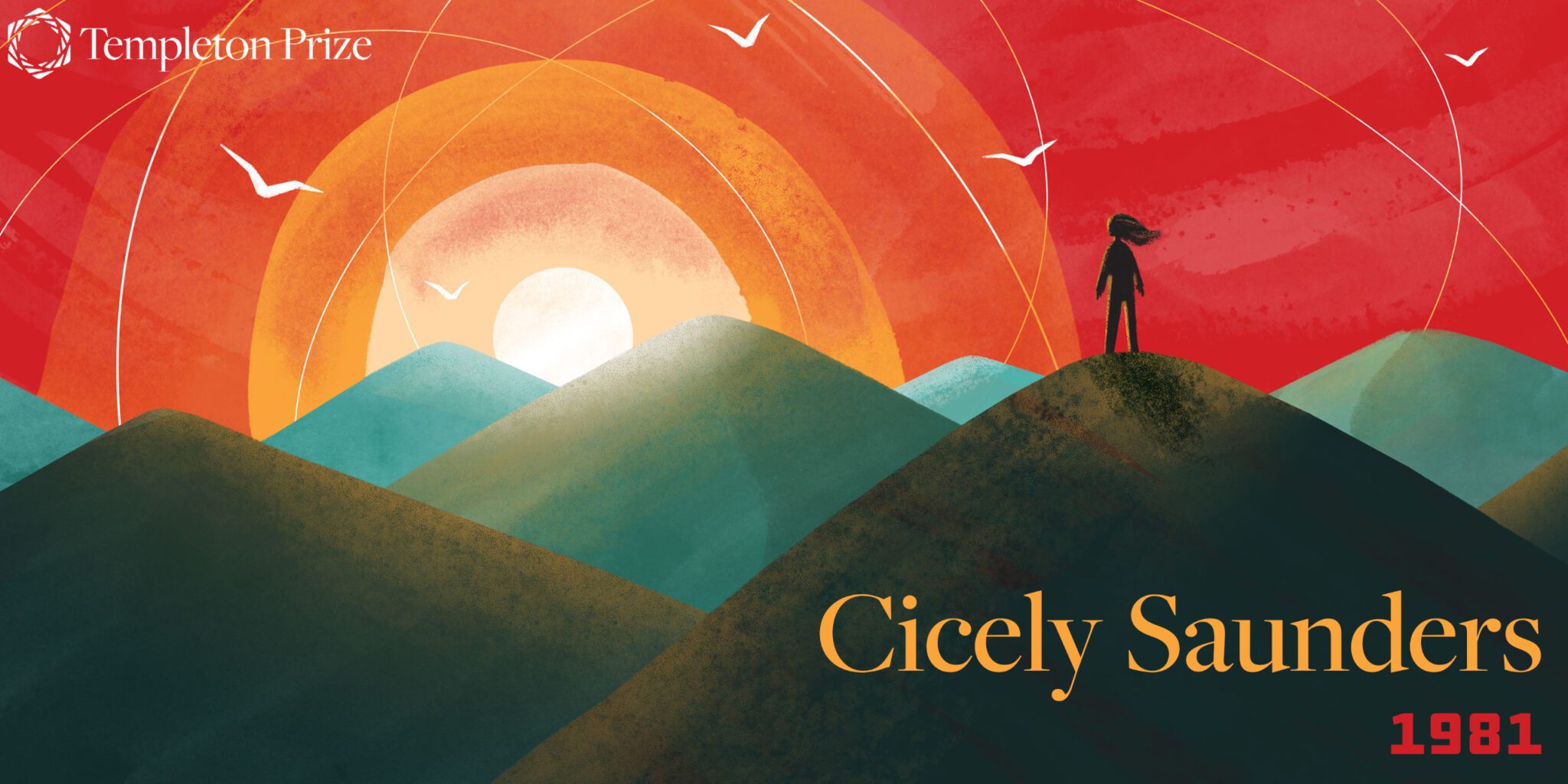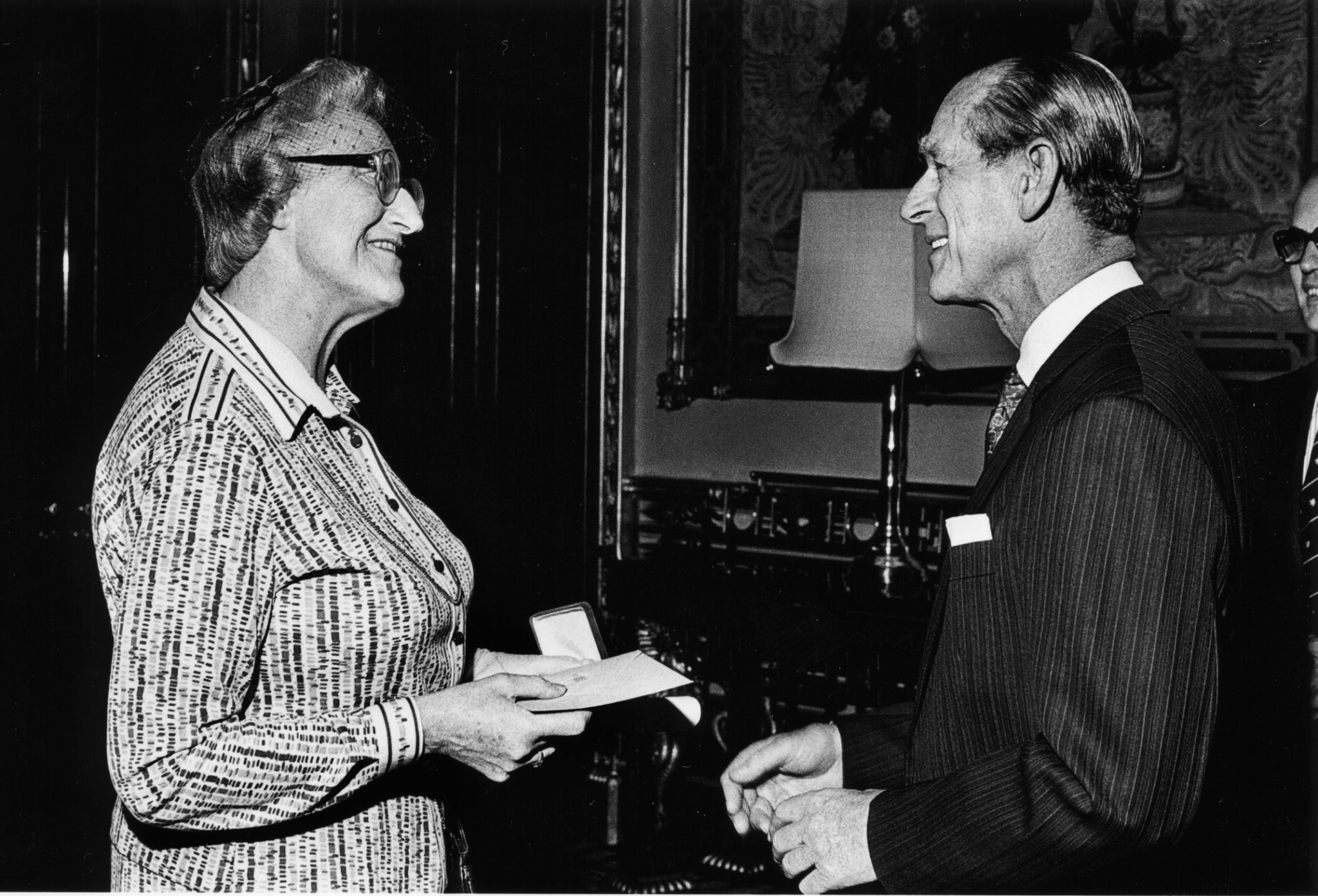In 1973, the first Templeton Prize was given to Mother Teresa. In 2023, we celebrate the 50th anniversary of this award. Over the next 52 weeks, we will highlight each of our laureates and reflect on their impact on the world. From humanitarians and saints to philosophers, theoretical physicists, and one king, the Templeton Prize has honored extraordinary people. Together, they have pushed the boundaries of our understanding of the deepest questions of the universe and humankind’s place and purpose within it, making this (we humbly think) the world’s most interesting prize.
From a young age, Cicely Saunders, who was born on June 22, 1918 in Hertfordshire, England, was as determined as she was compassionate. Educated at Roedean, a boarding school to prepare girls for a university education and future careers, Saunders later attended St. Anne’s College, Oxford, after her father disapproved of her desire to become a nurse. She studied philosophy, politics, and economics, but at the height of World War II, Saunders felt compelled to assist with the war efforts and left Oxford. She enrolled as a student nurse at St Thomas’ Hospital in London. Four years later, she was forced to quit the profession due to continual back pain.
Saunders returned to Oxford and completed a degree, which qualified her as a social worker, and went to work in London where she met patient David Tasma, a Polish refugee with terminal cancer. Their relationship was complex, and they often discussed their spiritual beliefs. When he died, Tasma left her £500 so that she could open a home for the dying to find peace in their final days.
This began her journey toward building a more compassionate form of end-of-life care, which came to define her mission and her impact on the world.
-

Cicely Saunders accepting her award from HRH Prince Phillip
She then began working for a surgeon and volunteering as a nurse at St. Luke’s Hospice for the Dying Poor. There, the modest idea of helping terminally ill people with their medical needs as well as their spiritual needs turned into a deep passion for Saunders. The surgeon supported her plan, but encouraged her to become a doctor so that she would be taken more seriously. She entered medical school, earned her degree, and went to work at St. Joseph’s Hospice in London, where she began research on pain control.
Saunders spent more than a decade studying the relationship between medical care and spiritual care and championing its importance for the terminally ill. In 1967, she founded St. Christopher’s Hospice, the first hospice to incorporate pain and symptom control, emotional and spiritual support, teaching, and research.
Cicely Saunders was awarded the Templeton Prize in 1981 for her pioneering work in caring for the dying and for founding the modern hospice and palliative care movement.
Her understanding of the medical and spiritual needs of her patients was unparalleled, and her desire and determination to care for others proved her remarkable level of compassion.
Prince Philip awarded the Templeton Prize medal and scroll to Saunders on May 12, 1981 at Buckingham Palace. Dr. Josephine Templeton, the daughter-in-law of Sir John Templeton, and British journalist William Rees-Mogg delivered addresses. Saunders was the first recipient of the Templeton Prize in the medical field.
“Over the past decade the word [hospice] has been filled up with new meanings and has come to stand for a world-wide movement identified by attitudes and expertise rather than by bricks and mortar, for many hospice teams have no beds of their own. I would define the modern hospice as a skilled community working to improve the quality of life remaining for patients and their families struggling with mortal and long term illness. … Paradoxically death has been shown to be a place of healing, of growth through loss. To speak of strength through weakness and vulnerability does not idealize them and we will continue to relieve all the suffering we can, but here is something to unite us in a sadly divided world.”
— Dame Cicely Saunders
“[Saunders’] work has gone far beyond the traditional role of a doctor serving patients. She, in her work, has touched all of us as we deal with the reality of living and dying. She has taken our inadequacies in these areas and has produced instead a sense of fulfillment.”
— Dr. Josephine Templeton
“Now what has been true, and is ceasing to be true, is that we faced with obvious joy, the experience of birth. We recognised in religion through baptism, the joy of a child being born into the world. But, at the same time, our culture was suppressing death. It was putting death aside as something which had nothing of value to say to us, and only fear and distress as a message to human life. So that the dying were put on one side, put into a kind of Coventry, not told what their state was, not thought of more than they had to be for practical purposes. And while birth was understood to be of profound importance, our culture was moving towards the view that the less attention that was given to dying — and almost, one might say, the less care, the better society would be able to go on. It has been Dame Cicely’s work to bring a revolution to that attitude, particularly in the medical profession. A revolution which has given dignity back to death.”
— William Rees-Mogg
Still Curious?
Learn more about Cicely Saunders here.

